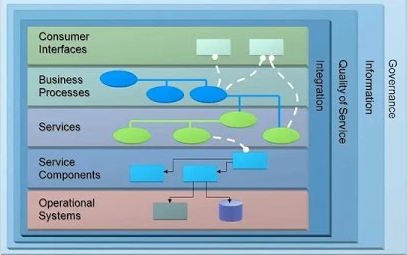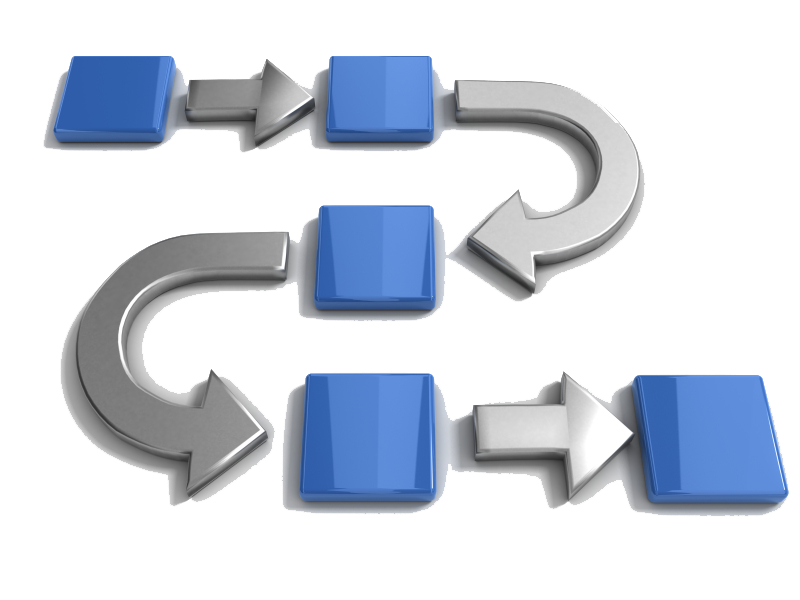Cloud Computing and Enterprise Software
Actionable Strategies has applied Cloud computing models to alter the way technology is applied to business solutions. Our experience was gained in previous generations of multi-tenant models called Application Service Providers and technology-enabled services. Today, we use Cloud platforms to accelerate time to market for products and improve IT service delivery in enterprises. Paradoxically, these benefits come with lower costs that are elastic, offer greater resilience and security, and constantly improve.
Established enterprises have large portfolios of legacy applications running on previous generations of technology. Our experience with these systems and platforms aids us in modernization and migration of these solutions to the Cloud.
In 2010, CEO Jeffrey Wu was interviewed about how Cloud Computing was being used in financial services. The interview covered key considerations for firms transitioning to Cloud Computing.
The interview was conducted by Kevin McPartland from the Tabb Group. Kevin heard from industry contacts about the early work that Actionable Strategies had performed in Cloud strategy and implementation.
In addition to modern technologies, Actionable Strategies continues to integrate legacy systems into leading edge enterprise architectures.
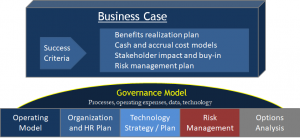 Cloud computing can yield dramatic operating and financial gains. Simultaneously, organizations can gain agility and raise service levels. Cloud computing must be planned and implemented properly to achieve these results. Cloud computing implementation involves far more than merely subscribing to a service.
Cloud computing can yield dramatic operating and financial gains. Simultaneously, organizations can gain agility and raise service levels. Cloud computing must be planned and implemented properly to achieve these results. Cloud computing implementation involves far more than merely subscribing to a service.
Actionable Strategies uses a proven planning framework to drive success.
Business Drivers
The promise of adopting cloud technologies has an appeal to both business and technology leaders.
- Tremendous business agility
- Dramatically lower costs
- Limited capital requirements
- Upward and downward scalability
- Best-in-class service levels
Migrating to the cloud is not as simple as enrolling in a subscription for most enterprises.
Strategy and Model
 Adopting the cloud involves a change in strategy and approach for both the selected technology and the adjacent applications and processes. The resultant strategy must define what a successful outcome will be and ensure that the organization achieves against the plan.
Adopting the cloud involves a change in strategy and approach for both the selected technology and the adjacent applications and processes. The resultant strategy must define what a successful outcome will be and ensure that the organization achieves against the plan.
Key elements of formulating and executing a Cloud strategy are illustrated by the model in the diagram.
Risk Management
All initiatives entail varying degrees of risk. Strategic planning involves assessing and mitigating elements of risk that encompass:
- Business
- Operations
- Regulatory / Compliance
- Technology
Actionable Strategies’ Value
Actionable Strategies is a recognized leader in cloud strategy and implementation. Our consultants bring the strategy, operational, financial and technical experience of forming and executing cloud models. Practical application of cloud models in both the customer and provider spaces provides our clients with unique insight into capturing the greatest value from the cloud. Development of a realistic business case, achievable objectives based on sustainable metrics and a viable plan form the essential foundation for the success of our clients.
As a pure consulting organization, we do not resell any cloud products or services. Because we do not benefit from any element of cloud adoption, we maintain objectivity and always act with our client’s best interests in mind.
Deliverables
Actionable Strategies collaborates with client leadership to develop the overall plan and components. Engagements run several weeks, depending on client availability and depth of analysis.
Typically, the following are provided:
- Stakeholder analysis
- Business goals and objectives
- Executive summary presentation
- Operating level presentation
- Detailed business case including cash flows, financial analysis and multiple growth / shrinkage scenarios
- Risk management plan
- Implementation roadmap and plan
- Industry analysis
- Vendor comparison and options
- Internal ranking and fit to purpose
During implementation, our role varies to suit the needs and available capacity of our clients. We can support an existing team, fill in gaps or manage the program in its entirety.
Actionable Strategies will define a pragmatic approach for each client. For details on how we can help you develop and implement an effective cloud strategy, please contact your Account Manage
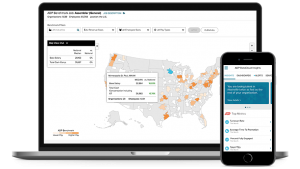 The client is a Fortune 500 company and provider of business process outsourcing and human capital management solutions. The company has revenues of $12B from 700,000 clients in 112 countries.
The client is a Fortune 500 company and provider of business process outsourcing and human capital management solutions. The company has revenues of $12B from 700,000 clients in 112 countries.
After conducting a strategic competitive analysis, Actionable Strategies was subsequently tasked with defining a product strategy for delivering products that provide predictive analytics. The client then asked us to build the initial product which won “Top HR Product” in HR Executive Magazine.
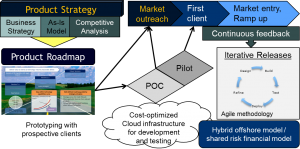 Product Strategy
Product Strategy
To remain competitive with new entrants into the market, the company wanted to provide more advanced capabilities as part of their current product sets. Our competitive analysis and market research demonstrated a willingness to pay for advanced analytical capabilities. We utilized our Lean Product Development approach for the project lifecycle.
Product Development
Actionable Strategies worked with the client to identify predictive measures and other meaningful analytics and turn them into product offerings.
- Predict turnover in different parts of the business and determine potential actions
- Show how business measures of costs and revenue loss related to human capital factors such as attrition and overtime
- Align compensation with market measures including by geography
- Provide flexible views of workforce demographics
- Recruit effectively by providing insight into compensation and other metrics
- Analyze turnover, tenure, retention and other key indicators across different views of the business
Software Development
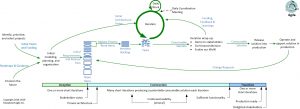 Essentially, Disciplined Agile Delivery was followed. Keys to success and other takeaways include:
Essentially, Disciplined Agile Delivery was followed. Keys to success and other takeaways include:
- Actionable Strategies conducted market research and competitive analysis to determine potential projects.
- New work items (stories) were added as part of the Lean Product Development process described above.
- The architecture served JSON objects to the browser, but used sample data until the middle tier could be built to transform cleansed production data.
- Evolving the WoW (way of working) involved reducing the iteration length to 1 week with the Chinese development team working late at night to collaborate with U.S. product stakeholders.
- The infrastructure evolved with all data and servers eventually moved into a Tier 1 production data center.
Results
Actionable Strategies collaborated closely with business and marketing leaders to conceive and build the product.
- The initial prototypes were well received by key customers, when previewed at trade shows, and to the press
- After formally launching the product, the client received the “Top HR Product” award by HR Executive Magazine
- The client immediately realized sales and testimonial customers from the enterprise segment of their business
- Actionable Strategies fully transitioned the Agile software development operation to the client IT organization when it was ready, from story cards to automated testing
- The client continued to extend the capabilities of the product into the mid-market segment, which is the most profitable area of their business
Today the client has a broad product offering and has elevated data delivery and analytics capabilities in their product and services mix.
 The client processes large volumes of data from over 15,000 institutions across many asset classes traded around the world. It provides aggregated data including illiquid assets and advanced reporting services to investment advisors and family offices. Actionable Strategies designed and developed Cloud data analytics integrated into Salesforce.com for a seamless user experience. Agile product development rapidly delivered successive versions of software using a cost effective hybrid onshore/offshore development team.
The client processes large volumes of data from over 15,000 institutions across many asset classes traded around the world. It provides aggregated data including illiquid assets and advanced reporting services to investment advisors and family offices. Actionable Strategies designed and developed Cloud data analytics integrated into Salesforce.com for a seamless user experience. Agile product development rapidly delivered successive versions of software using a cost effective hybrid onshore/offshore development team.
Client Profile
The client processes large volumes of data from over 15,000 institutions across many asset classes traded around the world. It provides aggregated data, including illiquid assets, and advanced reporting services to investment advisors and family offices.
Business Objective
 Allowing wealth management professionals to use advanced reporting and charting capabilities requires a flexible technology platform that does not drive up operating costs as growth is achieved.
Allowing wealth management professionals to use advanced reporting and charting capabilities requires a flexible technology platform that does not drive up operating costs as growth is achieved.
The client had established itself as a data provider but delivering analytical and reporting capabilities was lagging. Providing integrated data and reporting on a workstation was no longer viable using technology implemented on the desktop. Achieving a scalable Cloud model was the only way to meet customer needs and achieve profitability.
Solution Delivered
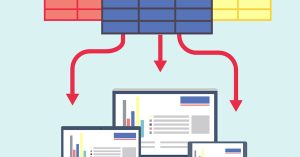 Traditional Business Intelligence platforms provide powerful capabilities with software installed locally. However, building a scalable business model cannot rely on the installation of complex desktop software. With a customer base of any reasonable size, the deployment and support of an installed technology solution adds operational costs that grow with the size of the customer base.
Traditional Business Intelligence platforms provide powerful capabilities with software installed locally. However, building a scalable business model cannot rely on the installation of complex desktop software. With a customer base of any reasonable size, the deployment and support of an installed technology solution adds operational costs that grow with the size of the customer base.
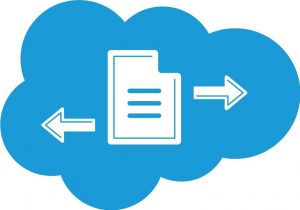 Consultants from Actionable Strategies had already developed automated data ingestion from a variety of data sources. In operations, we had worked on process optimization and data quality management.
Consultants from Actionable Strategies had already developed automated data ingestion from a variety of data sources. In operations, we had worked on process optimization and data quality management.
Our knowledge of the clients business and technology was combined with our expertise in Cloud computing models to provide a business solution that would scale with the client customer base.
Integrated User Experience
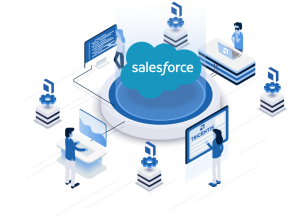 Actionable Strategies provided the client with a solution that delivered robust functionality while containing expenses as the customer base scaled up. The technical solution was embedded into Salesforce.com, the leading CRM platform. This solution prompted the client to pursue integration with other vendors serving specific target markets.
Actionable Strategies provided the client with a solution that delivered robust functionality while containing expenses as the customer base scaled up. The technical solution was embedded into Salesforce.com, the leading CRM platform. This solution prompted the client to pursue integration with other vendors serving specific target markets.
Salesforce.com Integration
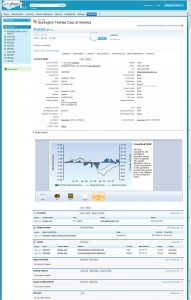 Leveraging our experience with Salesforce.com, we designed and developed an integrated solution that provided a seamless experience when working on a client account. We embedded the client’s product set so that aggregated financial data appeared as part of an account record in Salesforce. Hovering over thumbnails of charts popped up the analytical screen for that chart.
Leveraging our experience with Salesforce.com, we designed and developed an integrated solution that provided a seamless experience when working on a client account. We embedded the client’s product set so that aggregated financial data appeared as part of an account record in Salesforce. Hovering over thumbnails of charts popped up the analytical screen for that chart.
This provided Wealth Managers and Investment Advisors with a single platform to understand their complex client relationships delivered seamlessly in the Cloud.
(The screen is a prototype using dummy data.)
Agile Process
 Applying an Agile approach, Actionable Strategies delivered working software every iteration so the client could ensure marketing requirements were met and progress was tracking to plan. Initial iterations ran for 2 weeks, but this was reduced to 1 week after a good cadence was established. Iterations were packaged into frequent releases for more formal review by product management and marketing.
Applying an Agile approach, Actionable Strategies delivered working software every iteration so the client could ensure marketing requirements were met and progress was tracking to plan. Initial iterations ran for 2 weeks, but this was reduced to 1 week after a good cadence was established. Iterations were packaged into frequent releases for more formal review by product management and marketing.
Global Delivery Model
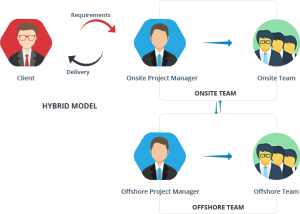 Utilizing a hybrid onshore/offshore development team, we rapidly delivered a solution in a cost-effective manner.
Utilizing a hybrid onshore/offshore development team, we rapidly delivered a solution in a cost-effective manner.
The project manager worked directly with the client team while the development team was based in China. The PM shared day-to-day responsibilities with the iteration manager in China who was fluent in English. The offshore team was composed of bilingual and native Chinese speakers. This structure has proven successful for us because it minimizes communication problems. Instant messaging and other collaboration tools provided ongoing dialog, but the time difference always presents a challenge.
Results
After successfully launching the initial solution, the client continued to develop advanced analytical capabilities.
- Using Agile development, Actionable Strategies delivered versions 1.0-1.5 and then the next major version 2.0.
- After 2 major releases, the entire process, codebase and development environment was documented and turned over to the client.
- Success in moving the product to the Cloud and introducing Agile led the client to engage Actionable Strategies for further work in both process and technology.
The client is now a leader in the reporting space. It has won awards for the technology from organizations such as the Wealth Management .com industry award.
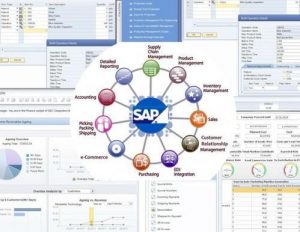 A very large enterprise in the Middle East needed a strategy for implementing ERP to consolidate their aging technologies onto a single, modern platform. The client selected Actionable Strategies because of the proven methodology proposed for enterprise platform selection with a project team experienced in large scale ERP package deployment in globally distributed organizations.
A very large enterprise in the Middle East needed a strategy for implementing ERP to consolidate their aging technologies onto a single, modern platform. The client selected Actionable Strategies because of the proven methodology proposed for enterprise platform selection with a project team experienced in large scale ERP package deployment in globally distributed organizations.
The client embraced the strategy, process changes and implementation plan, and was well-prepared as it launched the initiative.
Client Overview
 A very large enterprise in the Middle East needed a strategy for implementing ERP to consolidate their aging technologies onto a single, modern platform. The project is a result of sweeping change experienced across the Middle East including leadership and governance transitions at the confidential client which is part of the Kingdom of Saudi Arabia. The Middle East is experiencing tremendous growth in the technology sector.
A very large enterprise in the Middle East needed a strategy for implementing ERP to consolidate their aging technologies onto a single, modern platform. The project is a result of sweeping change experienced across the Middle East including leadership and governance transitions at the confidential client which is part of the Kingdom of Saudi Arabia. The Middle East is experiencing tremendous growth in the technology sector.
Business Problem
The client selected Actionable Strategies because of the proven methodology proposed for enterprise platform selection with a project team experienced in large scale ERP package deployment in globally distributed organizations.
Domains
The ERP Strategy required an analysis of critical needs related to:
- Human capital management
- Business processes and enterprise workflow
- Inventory
- Logistics
- Finance
- Technology
Cultural Challenges
Saudi Arabia poses a number of unique challenges based on culture, geography and the regulatory and governance frameworks. Our consultants needed to be well versed in dealing with cultural differences, including dealing with multiple languages and approaches to decision making and problem solving. The team needed to harmonize the client landscape to best practices.
Existing Technology
The client had a portfolio of legacy applications that would need to be decommissioned. However, they were wise enough not to seek change just for the sake of change. Clearly articulated business benefits would have to be a result. Therefore, our approach to introducing Lean processes implemented using best practices was highly attractive.
The underlying technologies were a mix of legacy IBM mainframe applications and point solutions using Microsoft technologies.
Solution Approach
Actionable Strategies applied a proven vendor evaluation methodology to rapidly drive a rational decision. This methodology has many embedded frameworks and has been applied to ERP platforms and large enterprises across a number of industries.
We then developed a realistic implementation plan and key considerations to ensure success. Most importantly, we provided consultative advice on achieving business benefits by introducing Lean processes as part of change management.
Platform Selection
Selecting the platform was an essential part of the project with numerous ramifications.
Knockout
 Initial screening of vendors provided for a quick elimination of vendors that were not suitable. This obviated the need for detailed analysis.
Initial screening of vendors provided for a quick elimination of vendors that were not suitable. This obviated the need for detailed analysis.
The following were the criteria that knocked out vendors who were not viable.
- Arabic language
- Local support for ongoing operations
- Enterprise class software
- Security appropriate for a highly sensitive industry
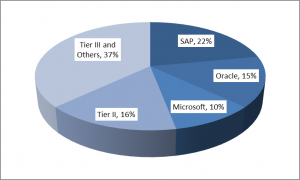 Vendor Analysis
Vendor Analysis
Vendors were analyzed based on a variety of factors. Reports from Industry Analysts were compiled and summarized. For example, market share was a consideration.
In this case, a short list was created that placed SAP head-to-head with Oracle.
Functional Analysis
 Scorecards were developed to identify the key functions that were important to the client. Weighting can vary by stakeholder and there are many functions that are part of ERP that do not fundamentally change the decision. This stakeholder input is captured and used during implementation.
Scorecards were developed to identify the key functions that were important to the client. Weighting can vary by stakeholder and there are many functions that are part of ERP that do not fundamentally change the decision. This stakeholder input is captured and used during implementation.
The detailed scoring is compiled across stakeholders and summarized by major function. These functions are then rolled up by the ERP module to which they belong. For this client the most vital features were rated as follows.
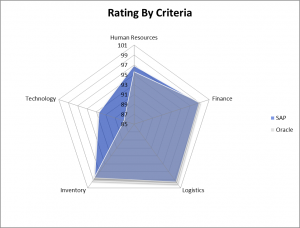
Technical Evaluation
 The underlying technology is important to the IT organization, but also has implications for end users. For this project, there were a number of key considerations around the technology.
The underlying technology is important to the IT organization, but also has implications for end users. For this project, there were a number of key considerations around the technology.
- Applications: Both vendors sought to expand their functional footprint by either building or buying applications that address needs not currently provided.
- Tools: Additional toolsets, especially around business intelligence which is driving significant revenue, are being rolled out.
- Foundation: The underlying application infrastructure continues to evolve support the needs of the additional products and the ability to integrate non-ERP applications.
Underlying Technologies
From a technical foundation perspective, Actionable Strategies evaluated the following areas critical to the client.
- Architecture
- Database
- Integration
Strategy and Roadmap
 For this client, it was important to decide which approach was most appropriate. Given the decade-plus time horizon, it was important to ascertain how the future state would impact the client. The two major vendors demonstrated different visions the essence of which was:
For this client, it was important to decide which approach was most appropriate. Given the decade-plus time horizon, it was important to ascertain how the future state would impact the client. The two major vendors demonstrated different visions the essence of which was:
- Oracle: Best-of-breed and acquired products with a pivot to the Cloud
- SAP: Tightly integrated
 Financial
Financial
Financial analysis was complex due to the variables in both licensing schemes. In addition, we looked at the total cost of ownership that incorporates the significant costs outside of the hardware and software purchases.
Implementation Approach
Actionable Strategies recommends that a structured process be followed to determine the best implementation approach. While go-live may be a single event, the underlying activities are best served as a series of interlinked projects run in a coordinated program. Where the as-is operations support it, a phased implementation has proven to be the least risky and most effective approach. However, when existing operations have tightly linked processes and technologies, the interim workarounds until enterprise go-live can be highly disruptive.
Process Best Practices
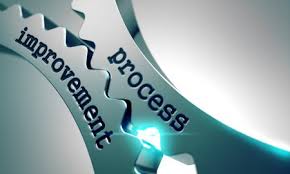 In evaluating the client processes, Actionable Strategies encouraged adoption of Lean processes. We advised the client to take full advantage of the required change management in implementing an ERP package to drive Lean given the fact that process change was inevitable.
In evaluating the client processes, Actionable Strategies encouraged adoption of Lean processes. We advised the client to take full advantage of the required change management in implementing an ERP package to drive Lean given the fact that process change was inevitable.
We also recommended that the client utilize best practices. Inefficient processes should be replaced with process best practices. SAP has many industry-tested processes already defined.
It was also noted that excessive customization or perpetuating existing inefficient processes is highly discouraged. Organizations that have not heeded this warning have experienced either catastrophic implementation failures or been forced to spend excessive resources and expenses in supporting all of the custom code and non-standard processes.
Project Planning: Time and Resources
For a successful implementation, it is essential that any ERP implementation have sufficient resources and time allocated. Trimming time and reducing resourcing during planning generally lead to delays and often create cost overruns as late resourcing constraints drive up costs. In a recent survey 61% of all ERP implementations reported being late.
The following table of average implementation times was used as a benchmark.
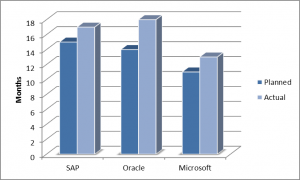
Acceptance Testing
While many implementation methodologies include testing to-be processes as part of acceptance testing, we recommend using the complete inventory of processes across the value chain. This includes both manual and automated processes, especially those interconnected processes that are:
- Upstream input
- Downstream dependent
Automated Testing
 Wherever possible it is recommended that automated testing be applied. The automated test bed yields payback in a number of scenarios.
Wherever possible it is recommended that automated testing be applied. The automated test bed yields payback in a number of scenarios.
- Change orders and rework in implementation
- Integrated with load and stress testing
- New module implementation
- Process change
- Data changes
- Regression testing during upgrades
- Regression testing when implementing or upgrading feeding or dependent systems
- Continuity of business testing
Business Continuity
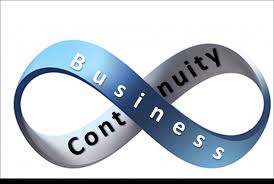 Process focused business continuity planning was recommended on top of basic disaster recovery planning. The complexity of an interconnected value chain implies that many systems and networks are vulnerable when a disaster is declared. The massive change involved clearly meant that existing continuity of business plans would become obsolete.
Process focused business continuity planning was recommended on top of basic disaster recovery planning. The complexity of an interconnected value chain implies that many systems and networks are vulnerable when a disaster is declared. The massive change involved clearly meant that existing continuity of business plans would become obsolete.
It was essential that periodic BCP tests include end-to-end process testing. Using the automated testbed built for project implementation makes this testing rapid, comprehensive and inexpensive.
![]() Based on the existing business, we were able to anticipate potential future needs.
Based on the existing business, we were able to anticipate potential future needs.
Global settings that might would likely be update included:
- Currencies
- Units of measurement
- ISO codes for EDI
- Calendars
- Time zones
- Financial Accounting: Business and Functional Areas
- Logistics: Locations
- Materials Management: Storage Locations
- Materials Management: Purchasing Organizations
- External Services
- Quality: Inspection
- Quality: Control
Business Results
 The client benefited from our depth of knowledge in business process, ERP planning and implementation, program and project management, and enterprise technology leadership. Actionable Strategies was able to provide guidance on Lean process innovation supported by Cloud computing models. The client embraced the strategy and was well-prepared to launch the initiative.
The client benefited from our depth of knowledge in business process, ERP planning and implementation, program and project management, and enterprise technology leadership. Actionable Strategies was able to provide guidance on Lean process innovation supported by Cloud computing models. The client embraced the strategy and was well-prepared to launch the initiative.

Actionable Strategies created the Enterprise Architecture for the Central Power Corporation of Vietnam. CPC is a state-owned power distribution utility that also operates some hydropower generators and EV charging infrastructure. CPC has a reputation in the Vietnamese energy sector for innovation.
Despite the success of individual applications, CPC was severely constrained in building enterprise applications as well as integrating new applications with existing software. Supporting a growing and transforming business was an increasing technology challenge.
Business drivers for the project included:
- Growing customer base
- Increased electricity demands
- Pressure to improve the reliability and quality of supply and service
Technical drivers included:
- Business process automation
- Lack of an enterprise architecture
- Need to incorporate power system operations and management functions
CPC’s stated objective was to develop an overall enterprise architecture, IT system infrastructure, and smart grid development strategy that includes an implementation plan that will improve operations and business processes. Targeted benefits included reduced system losses, improved management and operational efficiency, and improved quality of supply and electricity services to CPC customers.
Target State Architecture
The target state architecture applied the following core architectural principles.
- Integration via service bus: applications integrate with each other via the enterprise service bus
- Event-driven: applications publish relevant events on the bus in near real-time
- Common Information Model
- IEC CIM standards are applied to semantically consistent enterprise data
- CPC-specific information is conformed to a semantically consistent master data model and transactional data definitions
- Single source of truth: shared data is stored in the data warehouse
The to-be state of operational applications appears below. Back office applications would also use the Enterprise Service Bus and Data Warehouse.
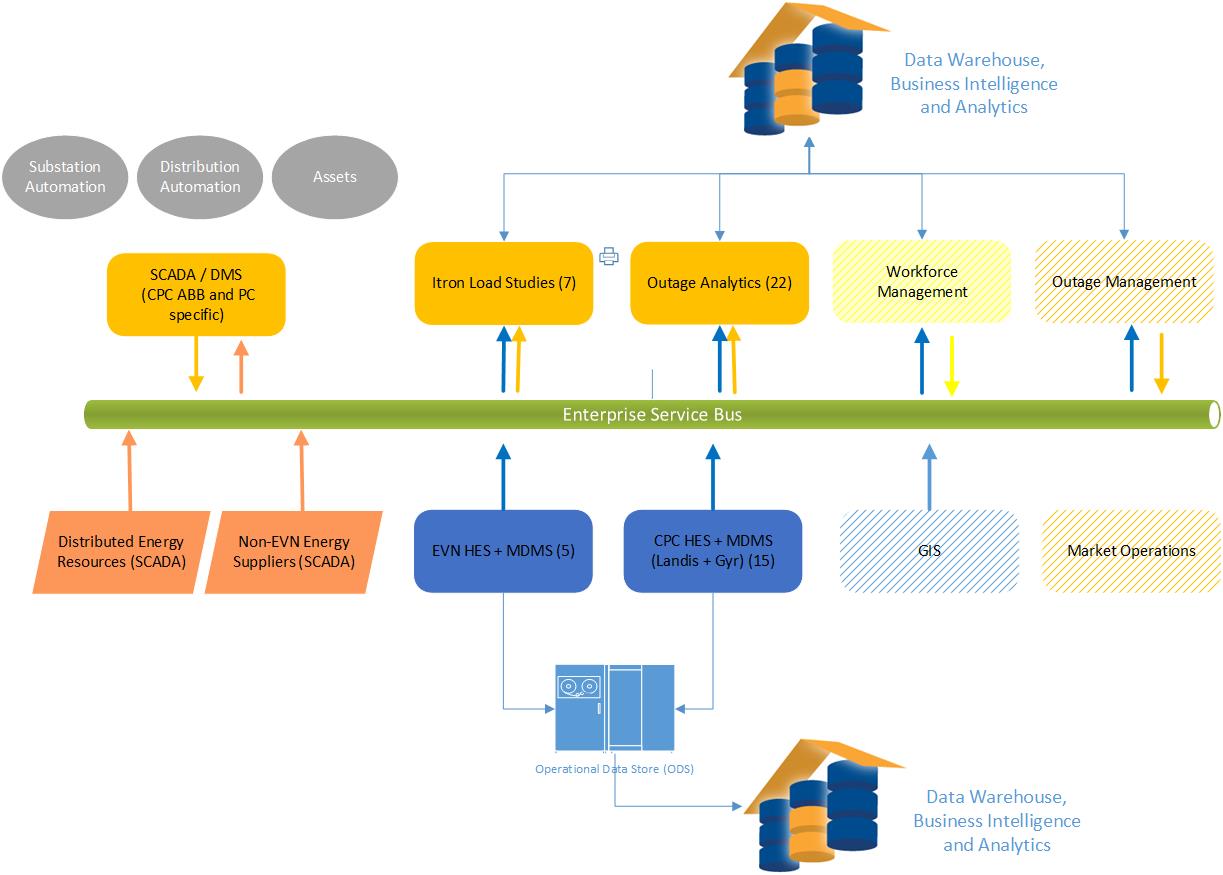
Enterprise Data Model
Actionable Strategies evaluated CPC’s proprietary data models and their integration with packaged platforms such as SAP/ISU. The enterprise data model provides:
- Consistent semantics which can be accelerated using the IEC Common Information Model which brings the ancillary benefit of the application of global standards
- Consolidation of data into a shared repository (data warehouse, ODS, data marts)
- Data governance and data quality management over enterprise data
- Geospatial data stored in a GIS
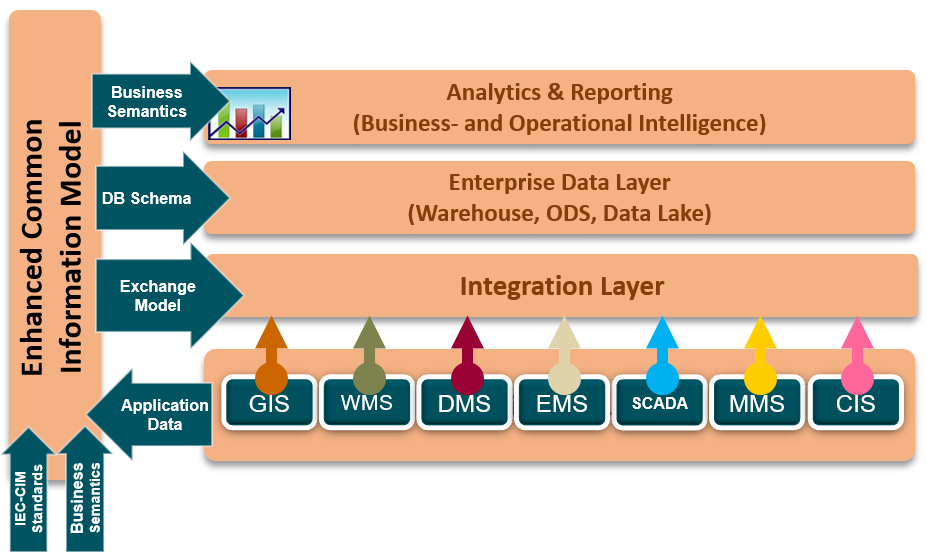
Loosely Coupled Applications
Applying a loosely coupled architecture provides many benefits to CPC in accelerating the delivery of applications and end-to-end solutions.
- Reduce development and maintenance
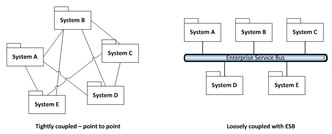 costs related to integration
costs related to integration - Integrate third party services readily
- Provide cost-efficient scalability
- Promote agility in development of integrated systems
- Enable resilience from a distributed architecture
The best practices of ESB and CIM have been proven in other markets and the benefits documented for CPC.
Retirement of Technical Debt
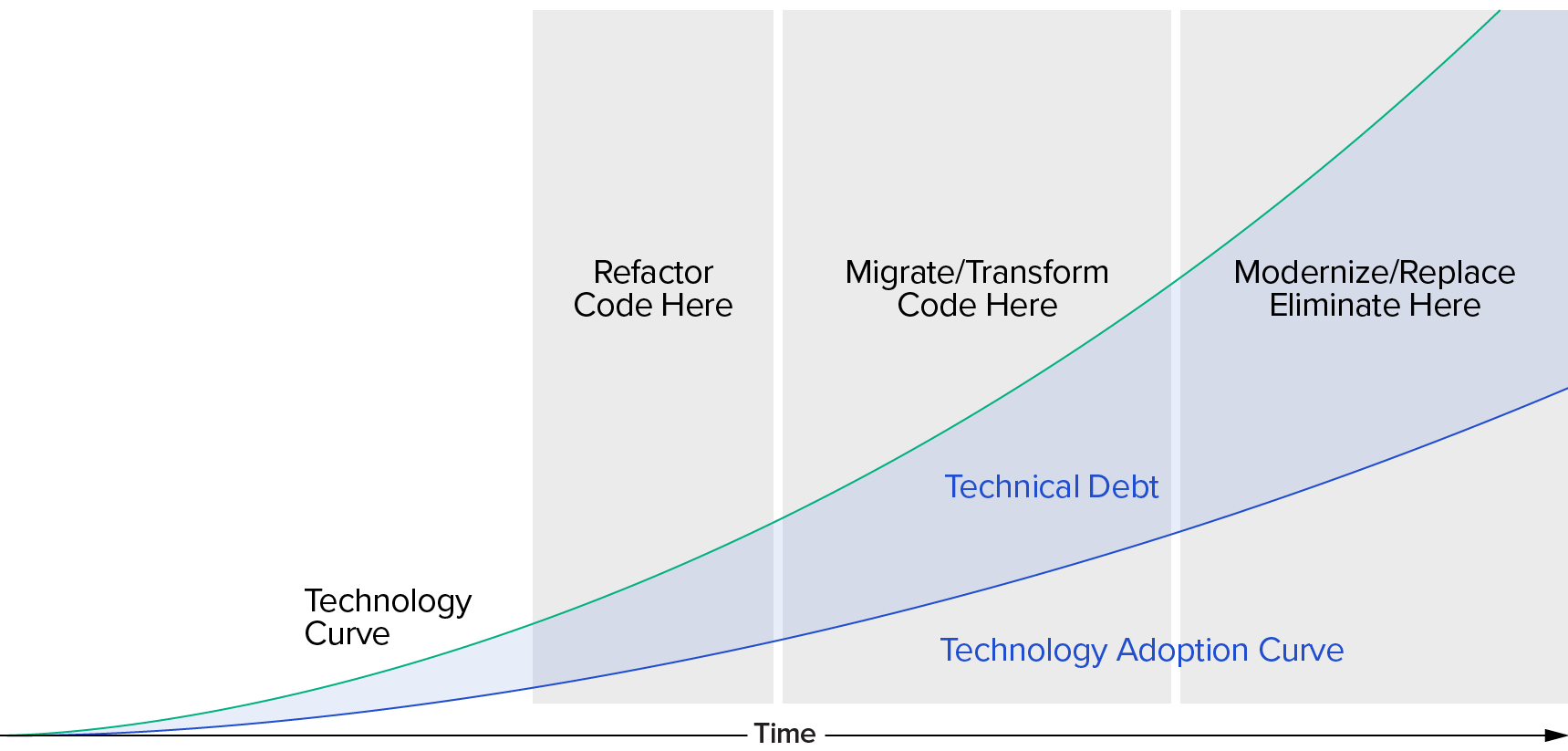 CPC has accumulated Technical Debt by building point (single purpose) applications to meet individual needs. While this provided value to a specific stakeholder, the ability for these applications to participate in an integrated portfolio servicing the CPC enterprise was diminished.
CPC has accumulated Technical Debt by building point (single purpose) applications to meet individual needs. While this provided value to a specific stakeholder, the ability for these applications to participate in an integrated portfolio servicing the CPC enterprise was diminished.
Technical debt increases as adoption rises which increases the number of integration points and data sharing requirements. These brittle interfaces drive up operating costs as the cost to enhance the applications also rise.
Retiring technical debt will mean that it no longer “crowds out” investment in new functionality. A technical model was provided to CPC to evaluate portfolio candidates and their disposition:
- Remain as-is
- Retire as no longer needed
- Rewire from point-to-point interfaces to ESB and the Data Warehouse (as a precursor to refactoring)
- Refactor under the Enterprise Architecture
- Rewrite using a CPC standard language, utilizing CPC tools and conforming to the EA
- Replace with a new or existing application
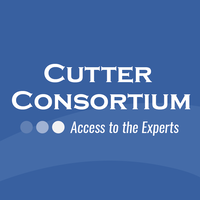 Standards in the cloud computing space are one of the major drivers affecting ongoing adoption. Attractive financial and service delivery models can only deliver business results if the underlying technology portfolio can interoperate effectively.
Standards in the cloud computing space are one of the major drivers affecting ongoing adoption. Attractive financial and service delivery models can only deliver business results if the underlying technology portfolio can interoperate effectively.
This article frames cloud computing as the latest generation of extended value chains that require standards to enable providers to interact with their clients.
Published in 2012, all of the issues addressed in the article remain relevant to the industry today.
- Data Security

- Reliability
- Business Continuity
- Application Integrity
- Interoperability
- Portability
- Pricing
- Data Security
Selecting business-oriented technologies is complicated due to the variety of needs across various parts of an organization. In addition, “future proofing” a solution requires evaluating the likely evolution of both the company and vendors providing technology.
Actionable Strategies has worked with some of the most complex organizations to select suitable technologies to support complicated business needs. As a consulting firm that does not resell hardware or software, our objectives are in complete alignment with our clients.
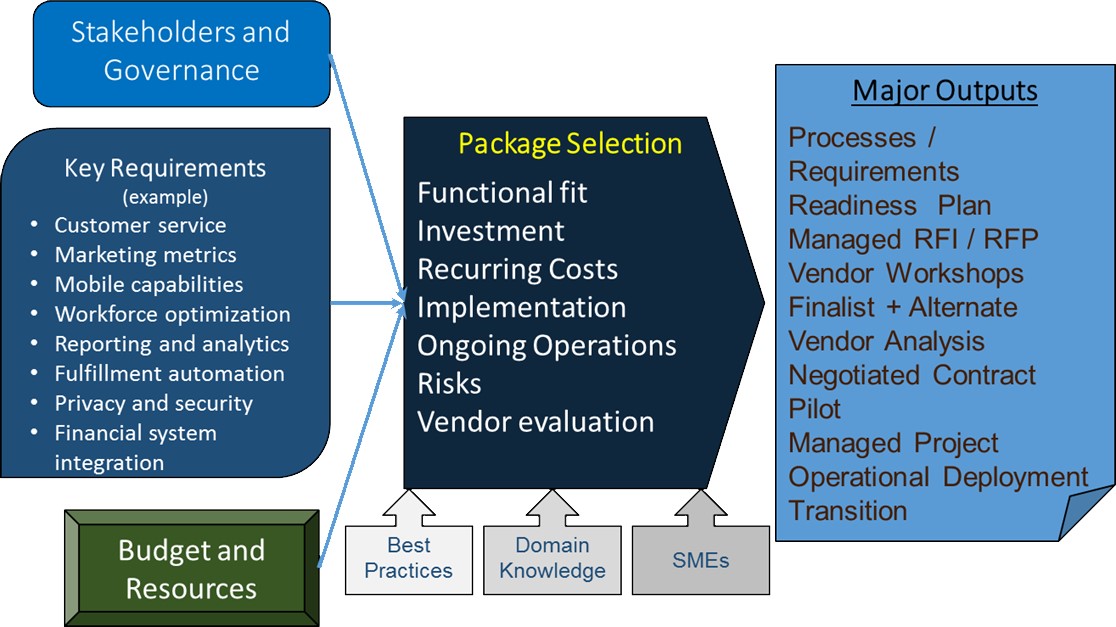
This white paper provides and agile approach to implementing a services-oriented architecture. The pragmatic approach acknowledges that a major initiative requiring a SOA must integrate with a legacy portfolio of technologies.
Actionable Strategies has applied this approach with large software vendors, sprawling complex enterprises, and with leading edge technology vendors who must implement their solutions into heterogenous customer environments.
The essential elements of the approach include:
- Metrics-driven planning
- Accurate estimation and budgeting
- Solid architecture and design
- Iterative delivery
- Quality and test enablement at the onset
